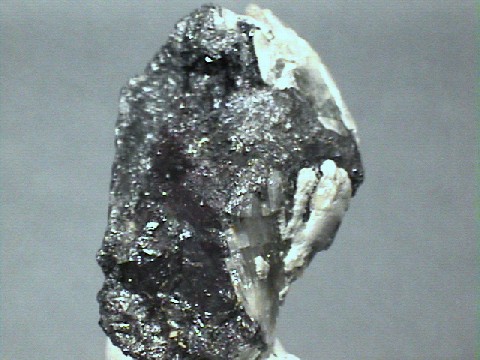 THE
MINERAL MIARGYRITE
THE
MINERAL MIARGYRITE
- Chemistry: AgSbS2, Silver Antimony Sulfide
- Class: Sulfides
- Subclass: Sulfosalts
- Uses: Mineral specimens and as a minor ore of silver.
Specimens
Miargyrite is a another interesting silver sulfide mineral that is popular
with collectors who love to collect silver bearing minerals.
Other silver sulfide minerals include
stephanite,
pyrargyrite,
polybasite,
proustite,
argyrodite,
PHYSICAL CHARACTERISTICS:
- Color is iron black to steel gray.
- Luster is metallic.
- Transparency: Crystals are opaque.
- Crystal System: Monoclinic; 2/m.
- Crystal Habits include complex crystals with a tabular character and massive.
- Cleavage: Not discernible.
- Fracture: Conchoidal.
- Hardness is 2 - 2.5
- Specific Gravity is 5.1 - 5.3 (somewhat heavier than average for metallic minerals)
- Streak is cherry-red.
- Other Characteristics: Specimens will darken with exposure to light.
- Associated Minerals include pyrargyrite, polybasite, proustite, galena, chalcopyrite and acanthite.
- Notable Occurrences include Saxony and the Harz Mountains of Germany; Pribram, Czech Republic; San Juan, Colorado; Silver City, Idaho; Cerbat Mountains, Arizona and California, USA; Romania; Chile and Bolivia.
- Best Field Indicators are crystal habit, streak, softness, color and luster.





